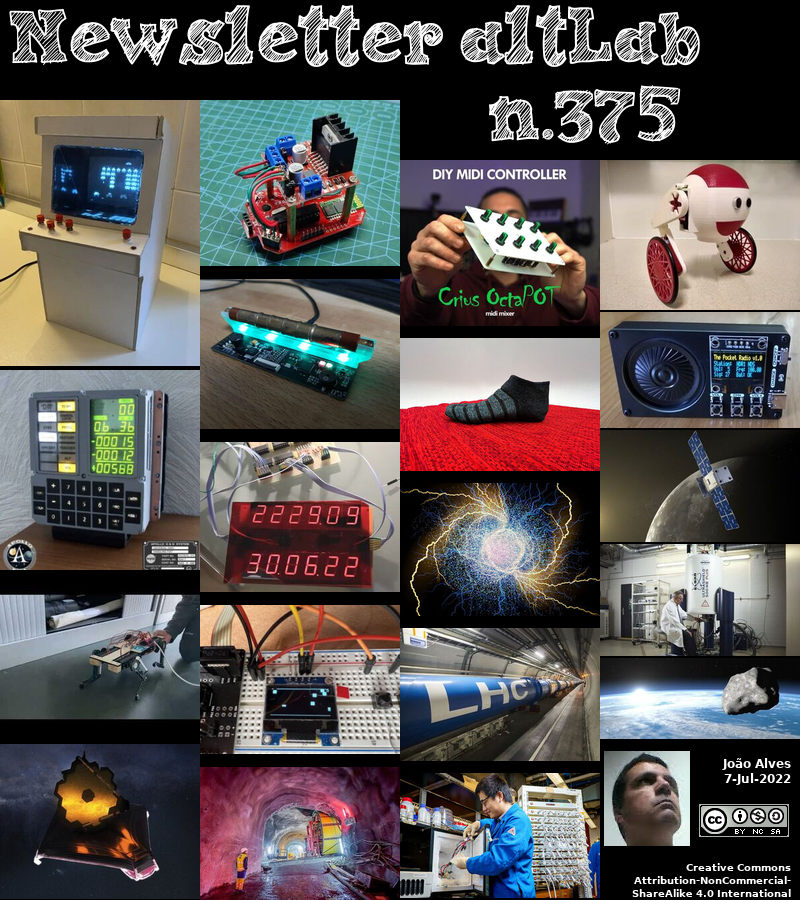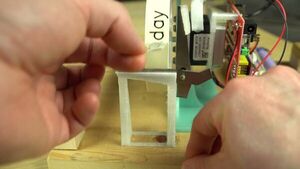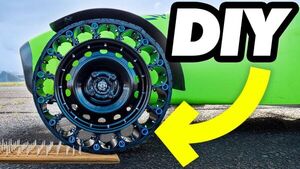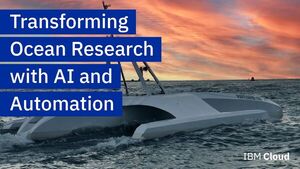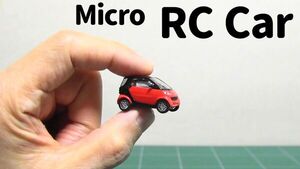2022-07-07 - Nº 375
Editorial
Esta é a Newsletter Nº 375 que se apresenta com o mesmo formato que as anteriores. Se gostar da Newsletter partilhe-a!
Todas as Newsletters encontram-se indexadas no link.
Esta Newsletter tem os seguintes tópicos:
Faz hoje anos que nascia, em 1673, o eminente relojoeiro inglês George Graham. Ele foi primeiro sócio, depois sucessor do negócio da Tompion. Graham melhorou a fuga do cilindro da Tompion's. Além disso, inventou (c. 1715) a fuga de cilindros (em que a roda de escape permanece estacionária quando não avança.) Usando estes dois desenvolvimentos em conjunto, os relógios de Graham's funcionaram com uma precisão insuperável durante mais de um século e meio. Também fez aparelhos astronómicos para Edmond Halley, James Bradley, a Academia Francesa de Ciências, e Charles Boyle, 4º Conde de Orrery. Para este último, concebeu um modelo de relógio mostrando os movimentos dos planetas à volta do Sol, posteriormente conhecido como um orrery. Inventou um calibrador de feixe com um parafuso micrómetro.
Faz também hoje anos que nascia, em 1752, o inventor e tecelão francês Joseph Marie Jacquard. Ele inventou o tear de energia programável Jacquard para tecido de brocado. O seu tear produziria mecanicamente qualquer padrão, controlado por cartões de controlo perfurados (1805). Isto serviu de impulso para a revolução tecnológica da indústria têxtil e é a base do tear automático moderno. O conceito de utilizar cartões perfurados foi mais tarde aplicado por Hollerith para acompanhar os dados do censo de 1890 dos EUA. A ideia evoluiu ainda mais para a introdução de cartões perfurados por computador.
Faz igualmente hoje anos que nascia, em 1816, o astrónomo suíço Rudolf Wolf. Ele descobriu o ciclo das manchas solares de 11 anos e foi o co-descobridor da sua ligação com a actividade geomagnética na Terra. Em 1849, concebeu um sistema agora conhecido como o número de manchas solares de Wolf. Este sistema ainda é utilizado para estudar a actividade solar através da contagem das manchas solares e dos grupos de manchas solares. Em matemática, Wolf escreveu sobre teoria e geometria do número primo, e mais tarde sobre probabilidade e estatística - um longo artigo discutiu a experiência da agulha de Buffon. Ele estimou π pelos métodos de Monte Carlo.
Por fim, faz hoje anos que nascia, em 1944, o embriologista inglês Ian Wilmut. Ele supervisionou a equipa de cientistas que produziu um cordeiro chamado Dolly, o primeiro mamífero clonado a partir de uma célula de um adulto. O nascimento da Dolly no Instituto Roslin, Edimburgo, Escócia, a 5 de Julho de 1996, foi anunciado a 23 de Fevereiro de 1997. O trabalho-chave foi realizado pelo microbiologista Keith Campbell.
Em 1936, várias patentes americanas foram concedidas ao seu inventor, Henry F. Phillips (Nos. 2.046.343, 2.046.837, -38, -39, -40), para o parafuso e chave de fendas Phillips. Descrevem um sistema de fixação envolvendo um recesso cruciforme pouco profundo e uma chave de fendas a condizer com uma ponta afunilada que convenientemente se auto-centram na cabeça do parafuso. Phillips fundou a Phillips Screw Company para licenciar as suas patentes. Após três anos de rejeição, finalmente convenceu a Empresa Americana de Parafusos a gastar $500.000 para desenvolver um processo de produção e fabricar os parafusos. A General Motors foi convencida a utilizar os parafusos no seu Cadillac de 1936. Em 1940, praticamente todos os fabricantes de automóveis americanos tinham mudado para parafusos Phillips.
Na Newsletter desta semana apresentamos diversas noticias, artigos científicos, projetos de maker e alguns vídeos interessantes.
 João Alves ([email protected])
João Alves ([email protected])
O conteúdo da Newsletter encontra-se sob a licença  Creative Commons Attribution-NonCommercial-ShareAlike 4.0 International License.
Creative Commons Attribution-NonCommercial-ShareAlike 4.0 International License.
Novidades da Semana
Outras Notícias

NASA Helps Decipher How Some Distant Planets Have Clouds of Sand
"A new study using archival observations by the now-retired Spitzer Space Telescope found a common trait among distant worlds where the exotic clouds form. Most clouds on Earth are made of water, but beyond our planet they come in many chemical varieties. The top of Jupiter’s atmosphere, for example, is blanketed in yellow-hued clouds made of ammonia and ammonium hydrosulfide. And on worlds outside our solar system, there are clouds composed of silicates, the family of rock-forming minerals that make up over 90% of Earth’s crust. But researchers haven’t been able to observe the conditions under which these clouds of small dust grains form. A new study appearing in the Monthly Notices of the Royal Astronomical Society provides some insight: The research reveals the temperature range at which silicate clouds can form and are visible at the top of a distant planet’s atmosphere." [...]

Nexperia releases the smallest DFN MOSFETs in the world
" Nexperia, the expert in essential semiconductors, today announced the release of a new range of 20 V & 30 V MOSFETs in the world’s smallest DFN package, the DFN0603. Nexperia already offers ESD protection devices in this package, but has now succeeded in bringing it to their MOSFET portfolio, a feat as yet unmatched in the industry. Next generation wearable and hearable devices are incorporating new levels of artificial intelligence (AI) and machine learning (ML), creating several challenges for product designers. Firstly, available board space is at a premium as functionality is added, plus heat dissipation becomes a problem as power consumption increases. Nexperia has drawn on its decades of experience as an industry leader in the production of discrete components and designed this innovative range of tiny MOSFETs to successfully overcome both concerns. The ultra-low-profile DFN0603 package, measuring only 0.63 x 0.33 x 0.25 mm, uses 13% less space than MOSFETs in the next smallest package (DFN0604)." [...]
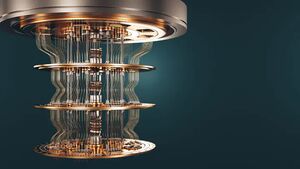
NXP Helps Standardize Next-Generation Security with Post-Quantum Cryptography
"NXP Semiconductors (NASDAQ: NXPI) today announced that a specialized security algorithm co-authored by NXP security experts has been selected by NIST to become part of an industry global standard designed to counter quantum threats. A second algorithm co-authored by NXP will also advance to the fourth and final round for further analysis and consideration for standardization. As the dangers of quantum computers become more clear, this effort anticipates the need to protect encrypted data and connected devices. The selected post-quantum cryptography (PQC) algorithms will be used to develop a new public key encryption standard that is secure against both traditional and quantum computers. Many cyber security experts believe that when large-scale quantum computers come to fruition, the sheer computing power of these machines will be able to “solve” encryption challenges in a fraction of the time, breaking today’s public key encryption systems and leaving data, digital signatures and devices vulnerable. This creates substantial security risks for online devices and data, including financial transactions, critical infrastructure, over-the-air update mechanisms, and more." [...]

New maXTouch® Knob-on-Display™ (KoD™) Touch Controller Family Disrupts Traditional Touchscreen Designs
"Our maXTouch KoD controller enables innovative Human-Machine Interface (HMI) solutions by combining mechanical knobs with existing multi-touch displays. Many automotive and industrial touch HMI designers are looking to merge the benefits of a mechanical rotary encoder input with the flexibility of modern multi-touch displays. Microchip Technology Inc. (Nasdaq: MCHP) today announces the maXTouch® Knob-on-Display™ (KoD™) family of touchscreen controllers as the first automotive-grade touchscreen controller family to natively support the detection and reporting of capacitive rotary encoders, as well as mechanical switches on top of a touch panel. Unlike traditional mechanical rotary encoders, this new technology enables the mounting of the knob directly onto the display without an opening in the panel or any customization of the touch pattern, increasing design flexibility and system cost savings. The KoD technology eliminates the need for custom touch sensor patterns, providing designers the ability to easily implement a different knob count, shape and position to accommodate a variety of end-user products. The customized configurations are adjustable without changing the embedded firmware of the maXTouch KoD touch controller, leading to a faster and more flexible development cycle." [...]

STMicroelectronics reveals FlightSense™ multi-zone ToF sensor for gesture recognition, intruder alert, and human presence detection in front of PC
"STMicroelectronics (NYSE: STM), a global semiconductor leader serving customers across the spectrum of electronics applications, has unveiled its latest FlightSense™ Time-of-Flight (ToF) multi-zone sensor. Delivered together with a suite of valuable software algorithms, the combination provides a turnkey solution for user detection, gesture recognition, and intruder alert, specially designed for the PC market. ST’s FlightSense multi-zone sensors continuously scan their field of view to map the scene and gather intelligence without using a camera or recording images. By using ToF technology, the sensors can detect and track multiple targets, calculating at high speed their X/Y/Z coordinates and motion. The latest VL53L5CP FlightSense multi-zone sensor can detect multiple targets in 64 (8×8) zones within a wide 61-degree field of view. The sensor comes with Presence Premium PLUS, ST’s proprietary third generation of algorithms dedicated to PC applications, supporting its advanced and innovative features and enhancing data protection." [...]
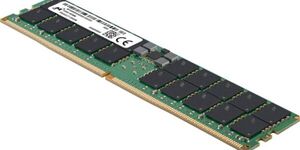
Micron DDR5 Server DRAM Available to Data Center Customers in Advance of Next-Generation Server Platforms
"Micron Technology, Inc. (Nasdaq: MU), today announced commercial and industrial channel partner availability of Micron DDR5 server DRAM in support of industry qualification of next-generation Intel® and AMD® DDR5 server and workstation platforms. The move to DDR5 memory enables up to an 85% increase in system performance over DDR4 DRAM5. Micron’s new server DDR5 memory maximizes performance for AI, HPC and data-intensive applications that require more CPU compute capacity and higher memory bandwidth than DDR4 technology can support. “As data continues to grow exponentially, the need to derive insights from that data is critical to business success,” said Teresa Kelley, vice president and general manager of Micron’s Commercial Products Group. “Data center operators need to maximize platform performance with advanced memory capabilities and processor advancements. Micron DDR5 server DRAM provides unparalleled bandwidth to manage even the most memory-intensive applications." [...]

Microsoft datacenter batteries to support growth of renewables on the power grid
"Nearly 400 wind farms in Ireland today collectively generate more than 35% of the island’s electricity. These carbon-free electrons travel on power transmission lines to farms, businesses and homes, helping utilities avoid emissions of carbon dioxide and other greenhouse gases from burning fossil fuels to generate electricity. Like everywhere around the world, the intensity of the wind in Ireland fluctuates throughout the day and over the course of the seasons, which causes variable power production. As the supply of renewable energy increases, a growing problem for electric power grid operators is created. That’s because they need to only put on the exact amount of energy that users are pulling out. No more, no less." [...]

LHCb discovers three new exotic particles
"The collaboration has observed a new kind of “pentaquark” and the first-ever pair of “tetraquarks” The international LHCb collaboration at the Large Hadron Collider (LHC) has observed three never-before-seen particles: a new kind of “pentaquark” and the first-ever pair of “tetraquarks”, which includes a new type of tetraquark. The findings, presented today at a CERN seminar, add three new exotic members to the growing list of new hadrons found at the LHC. They will help physicists better understand how quarks bind together into these composite particles. Quarks are elementary particles and come in six flavours: up, down, charm, strange, top and bottom. They usually combine together in groups of twos and threes to form hadrons such as the protons and neutrons that make up atomic nuclei. More rarely, however, they can also combine into four-quark and five-quark particles, or “tetraquarks” and “pentaquarks”." [...]

Revolutionary new Swiss 'water battery' will be one of Europe's main renewable sources of energy
"A water battery capable of storing electricity equivalent to 400,000 electric car batteries will begin operating in Switzerland next week. The pumped storage power plant was built into a subterranean cavern in the Swiss canton of Valais. With the ability to store and generate vast quantities of hydroelectric energy, the battery will play an important role in stabilising power supplies in Switzerland and Europe. What is a water battery? A water battery or pumped storage power plant is a type of hydroelectric energy storage. The battery is made from two large pools of water located at different heights." [...]

The breakthrough that could simplify the 3D chipmaking supply chain
"IBM Research and Tokyo Electron have partnered on a chipmaking innovation that simplifies the supply chain and process for producing wafers with 3D chip stacking technology. The demand for computer chips has never been higher, but the last two years have put unprecedented pressure on global supply chains. But even before then, there were pressures on the computer chip industry. Moore’s Law, which postulated that the number of transistors on a microchip would double each year, started to strain as chipmakers approached the physical limits of silicon. IBM Research’s smallest chip node to date is only 2 nanometers wide, for example. Our latest breakthrough explores how chips could be stacked to simplify the supply chain for producing chips." [...]
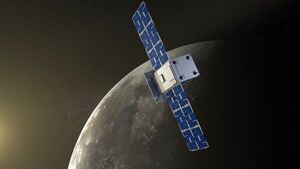
NASA's tiny CAPSTONE probe aces 1st engine burn en route to the moon
"CAPSTONE has bounced back from its recent communication dropout. NASA's little CAPSTONE moon probe has bounced back from its recent hiccup. The 55-pound (25 kilograms) CAPSTONE successfully performed its first engine burn today (July 7), an 11-minute maneuver that started at 8:30 a.m. EDT (1230 GMT) and changed its velocity by 45 mph (72 kph) as planned, NASA officials said in an update(opens in new tab). CAPSTONE is now about 289,000 miles (465,000 kilometers) from Earth, agency officials added. That's significantly beyond the orbit of the moon, but that's part of the plan; the probe is taking a long, looping and highly fuel-efficient path that will deliver it to lunar orbit on Nov. 13. Today's burn was initially supposed to happen on Tuesday (July 5), but the CAPSTONE team delayed it after briefly losing contact with the cubesat." [...]

Astronomers Just Detected an Asteroid That's Passing Extremely Close to Earth Today
"A small asteroid the size of a bus will make an extremely close approach to Earth on Thursday (July 7), passing within just 56,000 miles (90,000 kilometers) – or about 23 percent of the average distance between Earth and the Moon. And just a few days ago, no one knew it was coming The asteroid, named 2022 NF, is expected to pass safely by our planet, according to calculations by NASA's Jet Propulsion Laboratory in Pasadena, California. Astronomers discovered the sneaky asteroid using data from the Panoramic Survey Telescope and Rapid Response System (Pan-STARRS) – a system of cameras and telescopes based in Hawaii with the primary goal of detecting near-Earth objects, or NEOs. On July 4, researchers identified the object and calculated its approximate size and trajectory, estimating that the space rock measured between 18 and 41 feet wide (5.5 meters and 12.5 meters) at its longest dimension. Because of its diminutive size, 2022 NF does not fit NASA's criteria for a "potentially hazardous asteroid," which generally must measure at least 460 feet (140 meters) long and pass within 4.6 million miles (7.5 million km) of Earth, according to Live Science's sister site Space.com. While the newly detected asteroid will sail well within that distance, it is much too small to be considered an existential threat to Earth." [...]
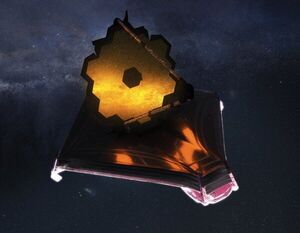
NASA Updates Coverage for Webb Telescope’s First Images Reveal
"Team members with the Mid-Infrared Instrument, a camera aboard the observatory, will celebrate the images at NASA’s Jet Propulsion Laboratory, which manages MIRI for NASA. NASA, in partnership with ESA (European Space Agency) and CSA (Canadian Space Agency), will release the James Webb Space Telescope’s first full-color images and spectroscopic data during a live broadcast beginning at 10:30 a.m. EDT (7:30 a.m. PDT) Tuesday, July 12, from NASA’s Goddard Space Flight Center in Greenbelt, Maryland. Released one by one, these first images from the world’s largest and most powerful space telescope will demonstrate Webb at its full power as it begins its mission to unfold the infrared universe. " [...]
Ciência e Tecnologia

Designing next generation analog chipsets for AI applications
"Researchers at the Indian Institute of Science (IISc) have developed a design framework to build next-generation analog computing chipsets that could be faster and require less power than the digital chips found in most electronic devices. Using their novel design framework, the team has built a prototype of an analog chipset called ARYABHAT-1 (Analog Reconfigurable technologY And Bias-scalable Hardware for AI Tasks). This type of chipset can be especially helpful for Artificial Intelligence (AI)-based applications like object or speech recognition – think Alexa or Siri – or those that require massive parallel computing operations at high speeds. Most electronic devices, particularly those that involve computing, use digital chips because the design process is simple and scalable. “But the advantage of analog is huge. You will get orders of magnitude improvement in power and size,” explains Chetan Singh Thakur, Assistant Professor at the Department of Electronic Systems Engineering (DESE), IISc, whose lab is leading the efforts to develop the analog chipset." [...]

Berkeley Lab Researchers Record Successful Startup of LUX-ZEPLIN Dark Matter Detector at Sanford Underground Research Facility
"Deep below the Black Hills of South Dakota in the Sanford Underground Research Facility (SURF), an innovative and uniquely sensitive dark matter detector – the LUX-ZEPLIN (LZ) experiment, led by Lawrence Berkeley National Lab (Berkeley Lab) – has passed a check-out phase of startup operations and delivered first results. The take home message from this successful startup: “We’re ready and everything’s looking good,” said Berkeley Lab senior physicist and past LZ spokesperson Kevin Lesko. “It’s a complex detector with many parts to it and they are all functioning well within expectations,” he said. In a paper posted online today on the experiment’s website, LZ researchers report that with the initial run, LZ is already the world’s most sensitive dark matter detector. The paper will appear on the online preprint archive arXiv.org later today. LZ spokesperson Hugh Lippincott of the University of California Santa Barbara said, “We plan to collect about 20 times more data in the coming years, so we’re only getting started." [...]

Optimal useful service life of household appliances analysed to cut environmental impacts
"A study by the UPV/EHU-University of the Basque Country shows that it is more efficient to invest in renewable energies than in "replacement schemes" for household appliances. To what extent do "replacement schemes" to substitute existing household appliances for new, more efficient equipment make sense? A study conducted by the UPV/EHU’s Life Cycle Thinking Group and Ekopol concludes that using renewable energy in household appliances would delay the need to replace them for environmental reasons until they have been in use for 30 years. The high energy consumption by the society we live in prompts the proposing of solutions to reduce CO2 emissions by using new, more efficient technologies. But can environmental impacts be reduced during the use phase? To what extent do "replacement schemes" to substitute existing household appliances for new, more efficient equipment make sense?" [...]

Smart textiles sense how their users are moving
"Researchers develop a comfortable, form-fitting fabric that recognizes its wearer’s activities, like walking, running, and jumping. Using a novel fabrication process, MIT researchers have produced smart textiles that snugly conform to the body so they can sense the wearer’s posture and motions. By incorporating a special type of plastic yarn and using heat to slightly melt it — a process called thermoforming — the researchers were able to greatly improve the precision of pressure sensors woven into multilayered knit textiles, which they call 3DKnITS. They used this process to create a “smart” shoe and mat, and then built a hardware and software system to measure and interpret data from the pressure sensors in real time. The machine-learning system predicted motions and yoga poses performed by an individual standing on the smart textile mat with about 99 percent accuracy. Their fabrication process, which takes advantage of digital knitting technology, enables rapid prototyping and can be easily scaled up for large-scale manufacturing, says Irmandy Wicaksono, a research assistant in the MIT Media Lab and lead author of a paper presenting 3DKnITS." [...]

NIST Announces First Four Quantum-Resistant Cryptographic Algorithms
"The U.S. Department of Commerce’s National Institute of Standards and Technology (NIST) has chosen the first group of encryption tools that are designed to withstand the assault of a future quantum computer, which could potentially crack the security used to protect privacy in the digital systems we rely on every day — such as online banking and email software. The four selected encryption algorithms will become part of NIST’s post-quantum cryptographic standard, expected to be finalized in about two years. “Today’s announcement is an important milestone in securing our sensitive data against the possibility of future cyberattacks from quantum computers,” said Secretary of Commerce Gina M. Raimondo. “Thanks to NIST’s expertise and commitment to cutting-edge technology, we are able to take the necessary steps to secure electronic information so U.S. businesses can continue innovating while maintaining the trust and confidence of their customers.” The announcement follows a six-year effort managed by NIST, which in 2016 called upon the world’s cryptographers to devise and then vet encryption methods that could resist an attack from a future quantum computer that is more powerful than the comparatively limited machines available today. The selection constitutes the beginning of the finale of the agency’s post-quantum cryptography standardization project. “NIST constantly looks to the future to anticipate the needs of U.S. industry and society as a whole, and when they are built, quantum computers powerful enough to break present-day encryption will pose a serious threat to our information systems,” said Under Secretary of Commerce for Standards and Technology and NIST Director Laurie E. Locascio." [...]
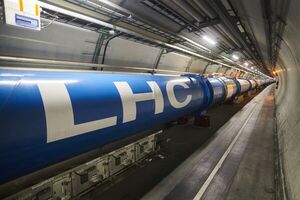
World's largest particle accelerator surges back to life with record-breaking run
"The world’s most powerful particle accelerator is ready to start delivering proton collisions to experiments at a record-breaking energy level after three years of upgrade and maintenance work. The Large Hadron Collider (LHC) at CERN is now equipped with new detector systems and enhanced data acquisition and computing structures which are now all operational. Today (July 5) marks the start of the accelerator's third run of data-taking for physics at the facility on the French-Swiss border, near Geneva. Staff and PhD students in the Particle Physics Group at The University of Manchester play a central role in both the ATLAS and LHCb experiments (two of the four experiments collecting data from the LHC) from research and development of cutting-edge particle detectors for these experiments to multiple leadership roles in international research groups. Professor Chris Parkes from The University of Manchester currently serves a three year term as Spokesperson of the LHCb experiment and said: “We are excited to see the research, development and construction efforts from the past 15 years turn into measurements of unprecedented precision. These will enable us to test the Standard Model of particle physics in unprecedented ways but they will surely also lead to surprising and unexpected discoveries.” Ten years since the discovery of the Higgs Boson particle was announced to the world, the LHC is today moving ahead to the next stage of fundamental physics experimentation to help humanity’s understanding of the fundamental particles and forces that govern the Universe." [...]
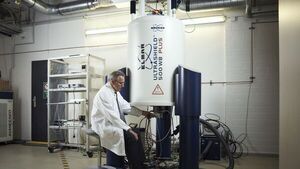
Tabletop Magnetic Resonance Units to Revolutionize Diagnostics and Materials Analysis
"In the HyPERiON CRC coordinated by the Karlsruhe Institute of Technology (KIT), researchers from KIT and the universities of Kaiserslautern, Konstanz and Stuttgart are jointly developing technology for compact high-performance magnetic resonance units. In the future, the devices could be used in the chemical and pharmaceutical industries, in medical practices or at border checkpoints. The German Research Foundation is funding the interdisciplinary group with more than 10.6 million euros for four years starting on July 1, 2022. Magnetic resonance is both the most chemically specific and the most versatile measurement method for acquiring detailed information on the structure and function of molecular matter. This makes it the fundamental technology for characterizations in chemical, biological or materials research. However, its widespread use is hindered by its low sensitivity and the relatively high level of specialization required for working with it." [...]
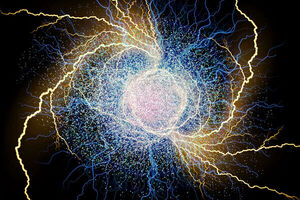
Physicists see electron whirlpools for the first time
"Long predicted but never observed, this fluid-like electron behavior could be leveraged for low-power next-generation electronics. Though they are discrete particles, water molecules flow collectively as liquids, producing streams, waves, whirlpools, and other classic fluid phenomena. Not so with electricity. While an electric current is also a construct of distinct particles — in this case, electrons — the particles are so small that any collective behavior among them is drowned out by larger influences as electrons pass through ordinary metals. But, in certain materials and under specific conditions, such effects fade away, and electrons can directly influence each other. In these instances, electrons can flow collectively like a fluid." [...]
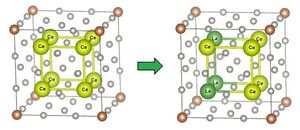
Exploiting Symmetries: Speeding Up the computational study of Solid Solutions
"Scientists develop software that can find all non-redundant substitution patterns in disordered systems, making computation in materials informatics faster Substituting atoms in otherwise symmetric crystals is a widely used approach to tune the properties of materials for practical applications. In a recent study, JAIST scientists developed "SHRY," a software that can efficiently determine all unique substituted crystal structures for a given system by disregarding substitution patterns that are symmetric to others [https://github.com/giprayogo/SHRY]. Their method could speed up the estimation of the properties of novel and potentially useful solids. Symmetry is a prevalent feature of nature at all scales. For example, our naked eyes can easily identify symmetries in the bodily shape of countless organisms. Symmetry is also very important in the fields of physics and chemistry, especially in the microscopic realm of atoms and molecules." [...]

Quantum physics: record entanglement of quantum memories
"A network in which data transmission is perfectly secure against hacking? If physicists have their way, this will become reality one day with the help of the quantum mechanical phenomenon known as entanglement. For entangled particles, the rule is: If you measure the state of one of the particles, then you automatically know the state of the other. It makes no difference how far away the entangled particles are from each other. This is an ideal state of affairs for transmitting information over long distances in a way that renders eavesdropping impossible. A team led by physicists Prof. Harald Weinfurter from LMU and Prof. Christoph Becher from Saarland University have now coupled two atomic quantum memories over a 33-kilometer-long fiber optic connection." [...]

Nano-Rust: Smart Additive for Autonomous Temperature Control
"FAU researchers develop a new, versatile method for temperature monitoring in materials. The right temperature matters – whether in technical processes, for the quality of food and medicines, or the lifetime of electronic components and batteries. For this purpose, temperature indicators record (un)desired temperature increases that can be read out later. Researchers in the group led by Prof. Dr. Karl Mandel, Professorship for Inorganic Chemistry at FAU, have succeeded in developing a novel temperature indicator in the form of a micrometer-sized particle whose central component is rust. The results of the research have been published in the journal Advanced Materials. The new temperature indicator has decisive advantages over previous indicators: its small size means it can be flexibly applied and the fact it is made of readily available materials makes it inexpensive to manufacture." [...]

Led by Columbia Engineering, Researchers Build Longest, Highly Conductive Molecular Nanowire
"A 2.6nm-long single molecule wire has quasi-metallic properties and shows an unusual increase of conductance as the wire length increases; its excellent conductivity holds great promise for the field of molecular electronics. As our devices get smaller and smaller, the use of molecules as the main components in electronic circuitry is becoming ever more critical. Over the past 10 years, researchers have been trying to use single molecules as conducting wires because of their small scale, distinct electronic characteristics, and high tunability. But in most molecular wires, as the length of the wire increases, the efficiency by which electrons are transmitted across the wire decreases exponentially. This limitation has made it especially challenging to build a long molecular wire—one that is much longer than a nanometer—that actually conducts electricity well. Columbia researchers announced today that they have built a nanowire that is 2.6 nanometers long, shows an unusual increase in conductance as the wire length increases, and has quasi-metallic properties." [...]
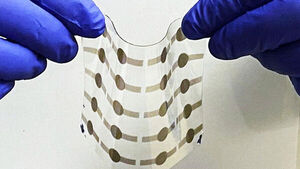
UCLA Scientists Develop Durable Material for Flexible Artificial Muscles
"UCLA materials scientists and colleagues at the nonprofit scientific research institute SRI International have developed a new material and manufacturing process for creating artificial muscles that are stronger and more flexible than their biological counterparts. “Creating an artificial muscle to enable work and detect force and touch has been one of the grand challenges of science and engineering,” said Qibing Pei, a professor of materials science and engineering at the UCLA Samueli School of Engineering and the corresponding author of a study recently published in Science. In order for a soft material to be considered for use as an artificial muscle, it must be able to output mechanical energy and remain viable under high-strain conditions — meaning it does not easily lose its form and strength after repeated work cycles. While many materials have been considered contenders for making artificial muscles, dielectric elastomers (DE) — lightweight materials with high elastic energy density — have been of special interest because of their optimal flexibility and toughness. Dielectric elastomers are electroactive polymers, which are natural or synthetic substances composed of large molecules that can change in size or shape when stimulated by an electric field. They can be used as actuators, enabling machines to operate by transforming electric energy into mechanical work." [...]

UChicago scientists invent ‘quantum flute’ that can make particles of light move together
"A new “quantum flute” experiment by University of Chicago physicists could point the way towards new quantum technology. The holes create different wavelengths, akin to ‘notes’ on a flute, that can be used to encode quantum information. University of Chicago physicists have invented a “quantum flute” that, like the Pied Piper, can coerce particles of light to move together in a way that’s never been seen before. Described in two studies published in Physical Review Letters and Nature Physics, the breakthrough could point the way towards realizing quantum memories or new forms of error correction in quantum computers, and observing quantum phenomena that cannot be seen in nature. Assoc. Prof. David Schuster’s lab works on quantum bits—the quantum equivalent of a computer bit—which tap the strange properties of particles at the atomic and sub-atomic level to do things that are otherwise impossible." [...]
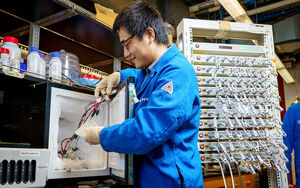
These Energy-Packed Batteries Work Well in Extreme Cold and Heat
"Engineers at the University of California San Diego have developed lithium-ion batteries that perform well at freezing cold and scorching hot temperatures, while packing a lot of energy. The researchers accomplished this feat by developing an electrolyte that is not only versatile and robust throughout a wide temperature range, but also compatible with a high energy anode and cathode. The temperature-resilient batteries are described in a paper published the week of July 4 in Proceedings of the National Academy of Sciences (PNAS). Such batteries could allow electric vehicles in cold climates to travel farther on a single charge; they could also reduce the need for cooling systems to keep the vehicles’ battery packs from overheating in hot climates, said Zheng Chen, a professor of nanoengineering at the UC San Diego Jacobs School of Engineering and senior author of the study. “You need high temperature operation in areas where the ambient temperature can reach the triple digits and the roads get even hotter. In electric vehicles, the battery packs are typically under the floor, close to these hot roads,” explained Chen, who is also a faculty member of the UC San Diego Sustainable Power and Energy Center." [...]
Projetos Maker
Diversos Projetos interessantes.
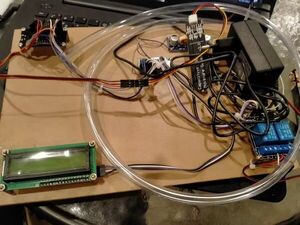
ESP32 based home garden watering control
"This ESP32 based use of automatic watering can help take care of plants. In day-to-day operations related to agriculture or gardening Watering is the most important cultural practice and the most labor-intensive task. No matter what the weather, be it too hot and dry or too cloudy and wet, you want to be able to control the amount of water that reaches your plants. Modern watering systems can be used effectively to water plants when they need it. But this manual watering process requires two important aspects to consider: when and how much to water. To replace manual activities and make the work of gardeners easier, we have created an automatic plant watering system." [...]
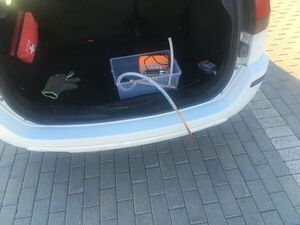
Diesel Car Exhaust Smoke Meter Plots Optical Transmission Through a Test Tube
"In the EU country Latvia maximum permitted extinction coefficient k = 3 (1/m) at max motor revolutions 5000/min. Upon yearly check-ups my car frequently exceeds the limit value. Because I drive only in the city and soot deposits in catalitic converter. A cure is to drive outside the city for at least an hour so that catalytic converter heats up to > +300°C and soot burns in the presences of palladium catalyst. Because I specialize in optical spectroscopy I became curious how the commercial measurement device AVL DiSmoke 280 works. Found a manufacturer data sheet." [...]

Weather Almanac
"Measure the weather and stay aware of climate change! Ever want to know exactly what the weather is like outside? Curious about how climate change has influenced your local weather? Do you want to know what the previous weather records are? I’ve made a weather almanac to find out! I wanted to make a weather almanac to remind us of historic local conditions and to document daily climate changes." [...]

Digital Fan Regulator
"Control fan using any microcontroller. in one of our projects, we need to speed control of ceiling fan so we made a circuit. this circuit is divided in to two-part 1. zero-cross detector 2. trice circuit for control in the zeroCross detector circuit, we detract zero-cross point AC voltage so we can give a signal just after zero crosses. after getting zero-cross we five pulses according like in India the AC frequncy is 50Hz so Time Period is T=1/50 =0.02s = 20000us and the half-cycle is 10000us so we give the signal at Trice is the width of 0 to 10000us to control the fan. 0 means 0% and 10000us means 100%. " [...]

Robot Axis (red)
"The Axis Robot is an educational project for learning programming using the Arduino IDE. Story This is my make of Robot Axis V1 by Axioma Robotics and published on Thingiverse. I am still working on the software for this project. The hardware side is complete and since Axioma Robotics has designed this project as an educational project for software development, I decided to publish this anyway in case anyone wants to start building this variant. Wheel motors & Thigh servos I used all metal gear 6V motors. I had to redesign the wheels to provide a tight fit on the motor shaft." [...]

Solar irradiance comparison fixed vs. tracking
"Compares solar irradiance performance between fixed system and a tracking system About this project This project compares solar panel irradiance between two well-known systems – fixed vs. tracking. Most solar generation systems used for residential areas have fixed solar panels, frequently mounted on the roof. Some solar generation sites have panels mounted in the fixed but optimal angle that can be used year-round. Some sites use adjustable tilt angle panels whose tilt angles are adjusted each season to improve efficiency. This project will have two solar panels – one is fixed (orientation and tilt) and the other tracks the sun and compare solar irradiance performance of the two systems. For tracking system, the solar panel’s tilt angle is adjusted by a servo motor, and the servo motor is mounted on the stepper for orientation adjustment." [...]
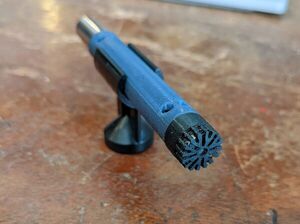
OpenRefMic
"OpenRefMic is an open hardware design for a reference microphone that fits in the popular 1/2" reference microphone form factor, works with consumer microphone interfaces, and meets or exceeds the performance of professional reference microphones at a vastly reduced total system cost. Critical specs, performance - Frequency Response: 10Hz-25kHz (±1dB after EQ) - Noise Floor: 18dBA - Acoustic Overload Point: 118dBSPL - Dimensions: 12.7x99mm - Parts cost: $40 (not including 3D printed parts) - Interface: mini-XLR, 48V phantom power - Total system cost: <$250 (with Focusrite Scarlett 2i2) The core of the OpenRefMic design is a preamplifier that biases an electret microphone from 48V phantom power and buffers the microphone signal to send it to a standard microphone interface. The circuit was designed for the PUI AOM-5024L-HD-F-R low noise microphone capsule, and has been built and tested with that part, but should work with most other electret mics. The schematic and PCB layout were done with KiCAD and are available in the Preamplifier section of the project, along with the BOM for all electrical and mechanical parts. OpenRefMic construction is simple. The case is 3D printed with any standard material, and the mic capsule is held in place with a press-fit grille printed in TPU." [...]

Astronomical Clock with RTC ds3231
"An astronomical clock with 16 functions, with only three shift registers Years ago I ordered 12 7-segment displays. I wanted to make a clock that displayed the time and date. But it appeared that it took too much digital IC's to realize it. Nowadays there is arduino, and now it's much easier to do it. This clock can display time and date, moonage in days, sun rise and sun set, the maximum elevation of the sun, present elevation of the sun, tilt of the earth, time between sun rise and sun set, air pressure in mBar, temperature in celsius, Adjust mode to set the time and date, and set the aging register of the RTC. This clock uses the 1 Hz SQW from the RTC as an interrupt." [...]
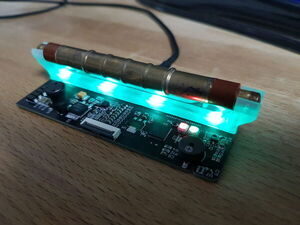
An IoT Geiger Counter
"Since the war in Ukraine, the discussion about nuclear weapons raised and people got into thinking about radioactive exposure again. While there is no real fear, there is still some awareness and interest in the normal radiation levels you have around you all the time. Every now and then you see a geiger counter project popping up in the web. Most of them look very solid and share their design files. However the least of them provide the measurements via WiFi. There are some, most of them not SMD but THT and thus are not very compact." [...]
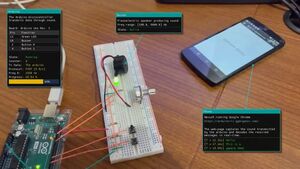
ggwave
"Tiny data-over-sound library This library allows you to communicate small amounts of data between air-gapped devices using sound. It implements a simple FSK-based transmission protocol that can be easily integrated in various projects. The bandwidth rate is between 8-16 bytes/sec depending on the protocol parameters. Error correction codes (ECC) are used to improve demodulation robustness. This library is used only to generate and analyze the RAW waveforms that are played and captured from your audio devices (speakers, microphones, etc.). You are free to use any audio backend (e.g." [...]
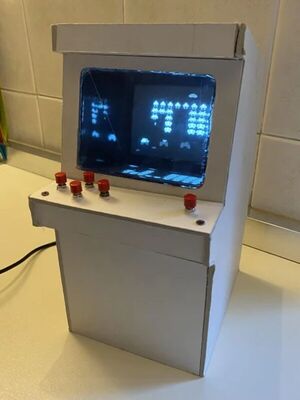
Space Invaders Mini Arcede With CRT
"I have built this Mini Cardboard Arcade using a B&W small CRT (Cathodic Ray Tube) recovered from an old video intercom. It is based on an Arduino Nano emulating the classical Space Invaders. The switch on the rear turns ON the Arduino and starts the game. Alternatively, one can use the two Audio/Video sockets on the back to connect another source. The reason to use this old, miniaturized CRT, is to give a proper vintage look to this small replica of one of the very first arcade games. Quoting Wikipedia “Space Invaders is considered one of the most influential video games of all time”." [...]
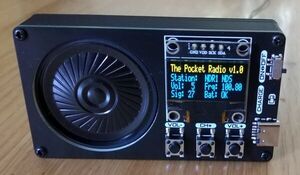
FM Pocket Radio based on ATtiny402/412
"PocketRadio is an ATtiny402/412 controlled FM radio with RDS (RDA5807MP), an integrated audio amplifier (TC8871 or XPT8871), a LiPo battery charger (MCP73831 or TP4054), an OLED display (SSD1306) and three buttons. You can directly connect a protected 3.7V LiPo battery, a 3W / 4Ω speaker and an FM antenna. " [...]
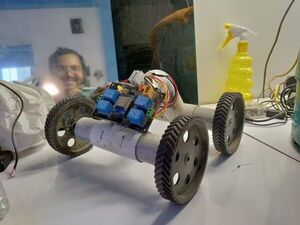
Robot using gesture
"This is a 4-wheel robot with an esp8266 microcontroller and controlled with smartphone gestures using the app" [...]
Crius OctaPot Midi Controller
"Crius "OctaPot" MIDI Mixer consists of 8 potentiometers with which we can control the parameters such as Volume,Pan,Delay,Reverb,Attack ect.. of the VST-Plugin or the DAW that we play music with. Supplies: - Arduino Nano x1 (We can alternatively use the UNO or the Mega depending on how many potentiometers we want to have. The Mega has 16 analog inputs) - Linear Rotary Potentiometers 10 KOhm x8 - Jumper Wires x10 - Small Jumper Wires x16 - Breadboard 830 points x1 - Micro USB cable x1 - Optionally CAPs for the potentiometers x8" [...]
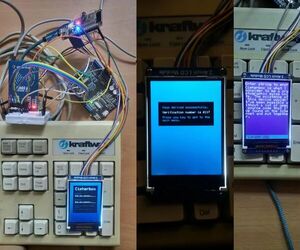
Cipherbox
"With the development of cryptanalysis and new hacking techniques, the cost of accessing your data without your authorization continues to decline, making it easier and more attractive for different sides to get it. I'm not going to get into details about the motivation of each side and the goals they're trying to achieve by obtaining your data. Instead, I would like to focus on the solution to that problem. In my opinion, the only way to keep your data private is to raise the costs of unauthorized access to it as high as possible, ideally higher than any reward that a third side can get by obtaining your data. Doing so puts away the incentives to access your data without your permission. To raise the cost of unauthorized access to your data, I've developed cipherbox." [...]

Motor Driver Board Atmega328PU and HC01
"Hey, what's up folks here's something super cool and useful if you're making a basic Robot Setup, A MOTOR DRIVER CONTROLLER BOARD that controls the motor driver by an Onboard MCU and has an HC01 BT Module for Bluetooth connectivity. I added four mounting Holes on the PCB so I could add PCB Standoffs to hold the motor driver on the top side of the board in the air. It's a clever method to use standoffs as we can add multiple Modules with this method just by stacking them up in a row of standoffs. I've also added an HC-SR04 Ultrasonic Sensor Breakout Pin on one side of the board so it can be used to make an obstruction-avoiding robot. This Instructables is gonna be about the build process of this motor driver, so let's get started. Following were the things I used in this Project- - Custom PCB - Atmega328PU - 22PF Cap 0603 Package - 16Mhz Crystal - 10K Resistor 0603 Package - 1K Resistor 0603 Package - Indicator LED 0603 Package - AMS1117 Voltage Regulator - HC01 BT Module - 10uF Cap 1206 Package - 1uF Cap 1206 Package - IC Socket DIP 28 - USB Micro Port - Header Pin socket - Arduino as ISP Setup for flashing Atmega328PU - PCB Standoffs - Motor - Ultrasonic Sensor HC-SR04 - Battery Pack 12V - Motor Driver L298N" [...]
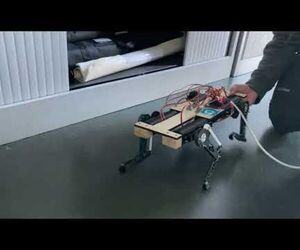
Polydog - Arduino Project
"During the Electronics-Arduino course of the 2nd year of the preparatory cycle at Polytech Nice Sophia, Raphael ANJOU and I had the opportunity to create from A to Z a project of our choice. Seduced by the quadruped robots, we quickly opted for the construction of a dog robot. Inspired by Spot (Boston Dynamics), Droid (Loki Le Dev), mini cheetah (MIT) and many others, we were able to create our first robot dog prototype. Here, we present PolyDog, fully made in 3D printing with servo motors (13kg/cm). It measures 17.6 cm wide and 42.4 cm long. It weighs about 2 kilograms.The movement of the legs follows a 4 bars parallelogram mechanism, to keep the motors at the level of the body." [...]
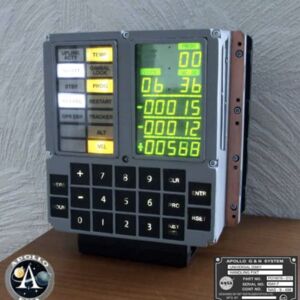
Dsky
"Create a working DSKY using a 3D printer and my AGC simulator running on a Raspberry Pi and slave Arduino Nanos. This project is designed to build a working model of the Display Keyboard (DSKY) portion of the Apollo Guidance Computer. The model utilizes 3D printed parts and 2 LCD screens along with a Raspberry Pi and 3 Arduinos. The DSKY will be capable of running the actual AGC assembly code internally using simulator code or connect to a hardware version of the AGC I am building as another project. Objectives: 1) Build a realistic a DSKY using 3D printing. 2) Have the DSKY operate running the original assembly code." [...]
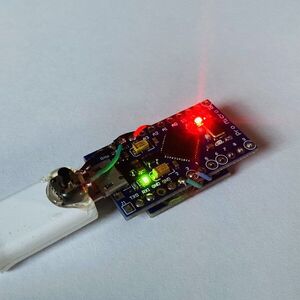
Gesture Mouse
"Have you ever wanted to motion with your hand where you want your mouse to go? This project is for building a Gesture Mouse. It plugs into your computer and turns your gestures into mouse movements! With this project, you can right click, scroll up and down, move your mouse anywhere (except for space), and swipe between displays on a Mac! How it Works This mouse utilizes an Atmega32u4 microcontroller and a MPU-6050 accelerometer and gyroscope. The microcontroller gathers the data from the accelerometer / gyroscope, and uses it to move and control the mouse on your personal computer!" [...]

Meteor Storm
"A pretty raw single-button microarcade game (similar to the well-known Flappy Bird and many others) made in a bunch of hours to test some attiny85 + SSD1306 OLED screen stuff. (as a future TODO, the code can probably be improved, cleaned and/or expanded - maybe I'll continue this in the future, who knows...). " [...]
Secção Videos
Videos interessantes.
That's all Folks!



